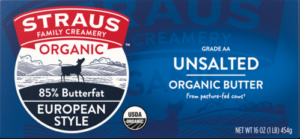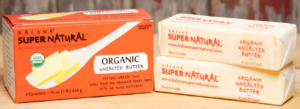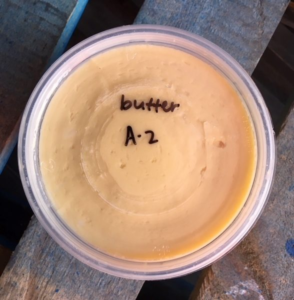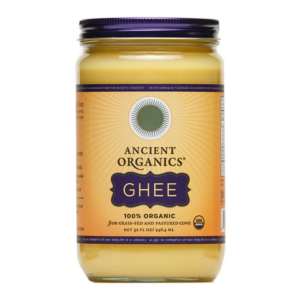Follow the link for the full discussion on real food.
I eat about 1/2 pound (two sticks) of NON-CULTURED (eating fermented and cultured foods can increase the bad type of lactic acid in the body, and in some people can even cause bleeding in the colon), organic butter per week. This includes the 5 TBL used in the 7 servings of potatoes I make to consume weekly.
Butter is used to eat with/complement any starch eaten, including if you eat starchy fruits like apples or pears (the fruits can be cooked down to make apple sauce for example, warm and stir in some butter, helps one digest these type foods better).
Butter is added to the nixtamalated corn tortilla eaten daily, added to the potatoes pre-made and then chilled and eaten daily, and used to prepare eggs eaten.
Some people love to add a bit of butter to their morning coffee!
As a note, especially to those weaning themselves off the toxic Keto diet, keep in mind that even high quality saturated fats like pure butter and pure coconut oil, still contain an amount of PUFA (poly unsaturated fatty acids).
And LARD, while considered an unsaturated fat, is especially composed of almost 50% PUFA with sometimes 10% or more of that the dangerous and poisonous linoleic acid fat.
While a good quantity of these fats can be regularly consumed, I suggest use more moderation than proposed with Keto.
I suggest find fresh, organic butter from cows that are 100% grass-fed. As well, look for high butter fat content of about 85% or better.
DO NOT CHOOSE ANY BUTTER THAT IS CULTURED or uses ENZYMES.
You will want the carton ingredients to ONLY say 100% pasteurized cream (no additives, coloring and NO enzymes or “cultured” anything).
If the farmer that supplies you raw milk sells raw butter they make from their farm milk, that’s the one you want (as long as the farmer does NOT culture it and the only ingredients are 100% raw milk cream).
This PA farm sells very high quality raw milk butter. They have a variety of cultured butter BUT I suggest purchasing instead their regular “A2/A2” butter.
HACKS: Sometimes the company advertises a good butter fat content but the butter is average or lower. You can sometimes tell the butter fat is low, or the quality is low because of higher moisture content if while frying up eggs for example, the butter “spits” a lot and forms a lot of brown pieces in it. These pieces are part of the milk solids, not the butter and could be indicating high moisture as well as low fat content.
And good quality ghee can be stored in the freezer indefinitely and used as an emergency food. It’s otherwise shelf stable for a year just on a pantry shelf.
BRANDS:
Except for sweet raw milk butter, this is my favorite butter provider.
Unfortunately, they have a sale agreement with the Whole Foods (which is Amazon now) and if you choose to boycott this provider, you will have trouble finding this brand unless you live in California. The farm and company is located in California and you might have an easier time finding it there in small local co-ops.
This is another good butter choice, often sold in the Natural Grocers and Azure Standard supplies.
Another great choice if high quality butter is not available is shelf stable high quality ghee.
Here is my favorite ghee; it’s made with butter from my favorite butter provider!
They are often sold out on their personal website but carry it through their distributors. Call them or email if you see their website is sold out.
They often are working on other company projects and supplying their distributors and could still sell you the quantity you need even if their website is not updated.
Some of the Natural Grocers carry this brand of ghee too. You can get on their email list for notifications when available or ask to purchase direct.
This PA farm also sells high quality ghee.
HACK:
I like buying the larger jars for economy and scooping the ghee into my small mason jars for storage when it arrives.






